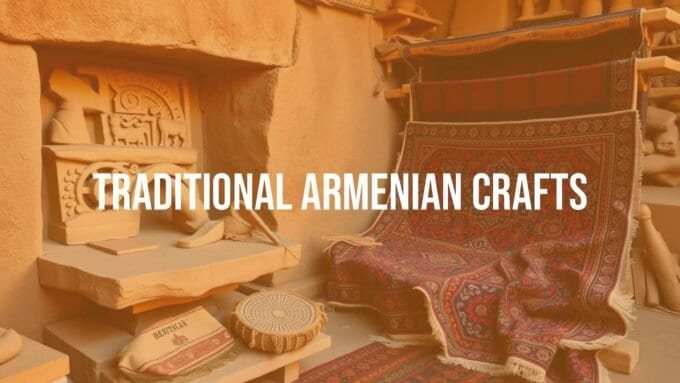Speaking Armenian, a language rich in history and culture, can look hard at first. With a clear plan, good tools, and steady effort, you can make real progress and enjoy the process. This guide explains the key parts of Armenian and gives simple steps and tips, whether you are a new learner or brushing up on skills.
We’ll cover the alphabet, sounds, dialects, and grammar in plain terms. You’ll also find learning methods, helpful apps, and ways to use Armenian in daily life. Ready to get started and build real confidence in speaking Armenian?
What Makes Armenian a Unique Language?
Armenian stands out among languages for its long past and special features. It is Indo-European but forms its own branch, so it doesn’t fit neatly into families like Slavic or Romance. This background gives Armenian a structure and sound that feel different and interesting to learn.
The language also carries deep cultural meaning. Armenia is one of the oldest nations and the first to adopt Christianity as a state religion in 301 AD. Learning Armenian helps you connect with a long tradition, including films by Sergei Parajanov and works by writers like Raffi and Demirdjian.
Armenian Alphabet and Script
Armenian uses its own script, created by the monk Mesrop Mashtots around 406 AD. The letters were made for writing and also used as numbers, with a strong spiritual role in early texts.
The alphabet has 39 letters, including 32 consonants and 6 vowels. It may look unfamiliar if you use Latin script, but the rules are steady and clear. Armenian spelling matches pronunciation closely, so once you learn the sounds, reading aloud is straightforward.

Distinct Pronunciation Features
Armenian has sounds that may be new to English speakers, such as aspirated and ejective consonants. These need careful tongue and breath control, and getting them right is very important for clear speech.
Stress almost always falls on the last syllable in words. This steady stress pattern helps you build a natural rhythm. Listen to native speakers often and practice the sounds until they feel natural.
Western vs Eastern Armenian Dialects
Armenian includes two main standard dialects: Eastern Armenian and Western Armenian. They are mostly understandable to each other, but they differ in sound, some words, and bits of grammar. Eastern Armenian is common in Armenia, Nagorno-Karabakh, and communities in Iran and Russia. Western Armenian is widely used in the diaspora across the Middle East, Europe, and North America.
Choose a dialect at the start, since many courses focus on one. Platforms like Tun Online teach both, so you can pick based on family ties, plans, or personal interest. Knowing the differences early helps you adjust your plan and stay consistent.
How to Start Speaking Armenian as a Beginner
Starting a new language feels big, but you can make fast progress with simple, everyday words and phrases. Aim for basic communication first. Build small habits, and do not worry about mistakes. Each short exchange you manage will motivate you to keep going.
Think of learning like laying bricks. Each phrase adds to your base. Keep it simple, practice a little daily, and enjoy small wins.
Essential Armenian Phrases for Everyday Situations
Begin with greetings and polite expressions. These help you speak with people right away and show respect.
| Armenian | Transliteration | English |
|---|---|---|
| Բարև Ձեզ | Barev Dzez | Hello |
| Շնորհակալություն | Shnorhakalutyun | Thank you |
| Բարի երեկո | Bari yereko | Good evening |
| Ցտեսություն | Ctesutyun | Goodbye |
| Այո | Ayo | Yes |
| Ոչ | Voch | No |
| Կներեք | Knereq | Please / Excuse me |
| Խնդրեմ | Khndrem | You’re welcome |
| Ներողություն | Neroghutyun | Sorry |
| Ներողություն, ինչ արժե՞ | Neroghutyun, inch arje? | Excuse me, how much is it? |
| Չեմ հասկանում | Chem haskanum | I don’t understand |
Sites like LingoHut group phrases by themes (for example, “Meeting someone” and “Please and thank you”), which makes practice simple.
Building Basic Vocabulary Fast
Grow your word list with common, useful terms. Start with topics you’ll use often.
- Numbers, days, months
- Family, clothing, food
- Places in town, transport, directions
- Common actions (eat, go, want, have)
Numbers 1-10: Mek, Yerku, Yerek, Chors, Hing, Vetz, Yot, Oot, Ine, Tas.
Many sites, including LingoHut, use short themed sets and a drip-feed style to help you remember. Flashcards, images, and small games make study more lively.
Simple Armenian Sentence Structure
After you know some words and phrases, start forming short sentences. Armenian grammar has some tricky parts, but simple subject-verb-object patterns will get you talking fast. Learn how to make basic statements and questions first.
Audio and visuals help a lot. Watch word order and verb changes. Tun Online has an “Armenian Sentence Structure Masterclass Series” that helps you build this skill. Don’t try to learn every rule at once-focus on patterns you can use right away.
Best Techniques and Resources for Learning to Speak Armenian
With today’s tools, you can mix free lessons, apps, and real conversations to build steady habits. Pick a blend that fits your style and keeps you coming back.
Short daily sessions beat long, rare sessions. Make practice a normal part of your day.

Free and Paid Armenian Lessons Online
There are many websites with Armenian lessons. Free options are a great start. LingoHut has 125 free lessons to build vocabulary and work on pronunciation. Each lesson takes about five minutes and includes small games. Topics range from greetings and manners to numbers and daily life.
For a more structured path, paid courses can help. Tun Online Armenian School offers full programs for Eastern and Western Armenian at beginner and intermediate levels. They focus on vocabulary, sentence building, grammar, and pronunciation. Plans run from $60.00 to $127.00 per month. You can also try free sample lessons before paying.
Mobile Apps, Audio, and Interactive Tools
Mobile apps fit busy days. Ling App makes learning fun with real native voices and short games that turn practice into play. It strengthens vocabulary with reviews and flashcards. The “Dialog” feature lets you roleplay common chats, from ordering coffee to asking for directions.
Audio is very helpful for listening and pronunciation. LingoHut’s voice-led practice guides you through Armenian sounds so you can speak more clearly with native speakers. Pick tools that use real voices, not synthetic ones, so you copy true pronunciation. Interactive tasks, games, and videos keep study lively.
Learning with Native Speakers and Tutors
Talking with native speakers builds real skill fast. You’ll get instant feedback, natural phrases, and cultural tips. Many platforms connect learners with tutors or partners. Tun Online lets you practice by text, voice, and video with other Armenian speakers to build your speaking ability.
A tutor can check your level, set goals with you, and give specific advice. They correct mistakes, explain grammar, and share culture that books might miss. Even as a beginner, try short chats-many teachers guide newcomers with patience and clear steps.
Using Flashcards and Language Workbooks
Flashcards are great for learning and remembering words. Make your own or use digital decks in apps like Ling, and save “Favorites” for review. Quick self-tests help a lot with recall.
Workbooks give clear practice for grammar, writing, and vocabulary. They reinforce what you learn online. Tun Online sells Armenian Reading and Writing Workbook Bundles and an Armenian-English Alphabet Flashcard set. Mixing digital tools with print practice gives you a balanced study plan.
Improving Armenian Pronunciation and Listening Skills
Knowing words is one part; saying them clearly and understanding others is just as key. Pronunciation and listening support each other. Armenian has a steady sound system, and you can master it with steady, focused practice.
Train both your ear and your mouth. Learn to hear new sounds, and teach your mouth the shapes and timing to make them.
Tips to Master Armenian Sounds
- Practice aspirated and ejective consonants on their own first.
- Watch tongue position, mouth shape, and breath.
- Record yourself and compare to native audio.
- Copy native speakers closely; exaggerate at first if needed.
- Keep the word stress on the last syllable.
Many sites offer single-letter audio clips. Use them to build muscle memory and clearer speech.
Practicing with Native Audio Resources
Listen to native speech often, even if you miss words at first. This builds a feel for rhythm, stress, and speed. LingoHut’s guided audio helps you get used to Armenian sounds and prepare for real talks.
Add music, podcasts, films, and news. Start with learner-friendly content, then move to native material. Ling App uses real native voices for its audio, which gives you a true model to follow. Replay short parts and try to catch words you already know.
Routine Exercises for Accent Improvement
Small daily drills help your accent grow more natural:
- Tongue twisters for new sounds
- Shadowing: repeat with a native speaker in real time
- Read aloud short sentences
- Use voice games (Ling has these) to practice speaking
Even 10-15 minutes a day can improve your accent and fluency a lot over time.
How to Practice Speaking Armenian in Real Life
Studying with lessons is one thing; using Armenian with people is the real test. Moving from study to use can feel scary, but this is where you gain speed and confidence. Real use helps you remember and connects you with culture.
Don’t wait for perfect grammar. Make mistakes and learn from them. Most native speakers will be happy you are trying.
Language Exchange with Armenian Speakers
Language exchange is a strong way to practice. You help someone with your language, and they help you with Armenian. It’s a friendly, fair setup that gives you real talk time. Tun Online can link you with Armenian speakers by text, voice, and video, which can also grow into friendships or work contacts.
You can also join online groups focused on Armenian language and culture. Be active: ask for short practice calls or message swaps. Even a few minutes of real chat builds skill and confidence.
Roleplay and Dialogues for Fluency
If live talks feel too scary at first, try roleplay. Many apps, like Ling, offer “Dialog” modes where you pick replies in common situations (cafés, travel, shops). You learn in context and practice flow without pressure.
Create your own scenes too. Practice a market visit, a restaurant order, or asking for directions. If you have a partner, switch roles. This trains you to recall phrases and handle common questions, so real talks feel less scary later.
Participating in Armenian Language Communities
Join Armenian language communities online or off. Forums, social groups, and learner spaces are good places to ask questions and practice. Many groups host virtual meetups.
If there is an Armenian community near you, look for cultural centers, churches, or clubs. They may offer classes and events where you can speak naturally. Even simple attempts will be appreciated. This builds language skill and a closer link to Armenian life and traditions.
Common Mistakes When Learning to Speak Armenian
All learners make mistakes, and Armenian learners do too. Knowing common trouble spots helps you move forward faster and avoid extra stress. Every mistake points to a place you can improve.
Use these errors as guides, not as signs to stop. Each fix makes your speech clearer and your confidence stronger.
Challenges with Armenian Grammar
Armenian grammar can surprise learners who come from very different systems. Cases are one hurdle. Armenian is an agglutinative language, adding suffixes to words to show function, which differs from English, where prepositions and word order do a lot of the work and which has ties to Germanic languages.
Verb endings change with tense, mood, person, and number, and irregular verbs can confuse learners. Armenian does not have grammatical gender, which helps, but noun and pronoun forms still need close attention. Regular practice with clear exercises and a focus on patterns (not just lists of rules) will help. Tun Online’s “Armenian Sentence Structure Masterclass Series” targets these skills step by step.
Pronunciation Pitfalls and How to Avoid Them
Many learners mix up aspirated vs. unaspirated pairs or voiced vs. voiceless sounds. Confusing “p,” “pʰ,” and “p’” can change meaning or make you hard to understand.
Another common issue is moving stress away from the last syllable. This can make speech sound odd or change meaning. Listen closely to native speakers, use voice-led practice, and record yourself. Ling App’s real voices and voice games help you notice small differences. Exaggerate sounds at first if needed, and ask a native speaker or tutor for feedback.
Overcoming Fear of Speaking
The biggest block for many learners is fear of speaking. You might worry about errors or not being understood. But language is for use.
Shift your mindset. Accept mistakes as part of learning. Start small with a helpful partner, roleplay, or even talk to yourself. Most native speakers are happy to hear their language, even if your speech is simple. Each short chat builds comfort and skills.
Getting the Most from Your Armenian Learning Journey
Learning Armenian is more than grammar and words. It is a path into a deep culture and long history. To make steady progress, set clear goals, keep your motivation up, and add culture to your study plan. This approach speeds up learning and builds a stronger bond with Armenia and its people.
Treat the process like an adventure with a map (goals), fuel (motivation), and new places to explore (culture). With these, your study time will feel meaningful and rewarding.
Setting Clear Language Goals
Before you jump in, decide why you want Armenian. Is it for travel, family, work, or curiosity? Your reason will shape your plan and your effort.
Set SMART goals (Specific, Measurable, Achievable, Relevant, Time-bound). For example:
- “In three months, I will introduce myself, order food, and ask for directions in Armenian.”
- “I will learn 50 new Armenian words each week.”
Loecsen asks about your current level and mindset, which helps you shape your plan. Clear goals give you direction and a way to track progress.
Tracking Progress and Keeping Motivation
Language learning takes time, so staying motivated is very important. Track what you finish: tick off lessons, list new words, or record short speech clips and listen again later to hear your growth.
Apps like Ling use game-like features to keep you engaged. You can maintain streaks, earn achievements, collect points, and move up leaderboards. Celebrate small wins, like catching a lyric in a song or handling a short chat. If you get stuck, review your goals, try a new method, or take a short break to clear your mind. Every bit of progress counts.
Exploring Armenian Culture to Boost Speaking Skills
Language and culture go together. To speak Armenian well, learn how people use it day to day. Read about Armenian history, traditions, folk culture, and famous monasteries and churches.
Watch Armenian films (including the work of Sergei Parajanov), listen to Armenian music, and try Armenian food. You may also notice everyday words borrowed from Russian or French in speech. Culture gives context, adds common phrases, and makes study more lively and meaningful. You will become both a better speaker and a more informed admirer of Armenian heritage.
Frequently Asked Questions about Speaking Armenian
How Difficult Is It to Learn Armenian?
It depends on your first language and past study. Armenian is its own branch of Indo-European and has a unique alphabet of 39 letters. Sounds like aspirated and ejective consonants take practice. The steady link between spelling and sound, plus the usual stress on the last syllable, makes some parts easier.
Its agglutinative style-adding suffixes to carry meaning-may be new to many learners. With steady practice and good tools, Armenian is very doable. Many platforms offer audio and visuals to make grammar and sounds clear for beginners. The culture you meet along the way makes the effort worth it.
What Is the Fastest Way to Become Conversational?
Focus on speaking and listening from day one. Learn key phrases and high-frequency words you can use right away. Don’t wait to master all grammar before you speak.
Pick tools with native audio and interactive dialogs, like the Ling App. Find a language exchange partner or tutor for short daily or near-daily sessions (15-30 minutes). Pay attention to rhythm, stress, and tone, not just word lists. Using the language often speeds up your path to real conversation.
Should Children Learn Armenian Differently from Adults?
Kids and adults learn in slightly different ways. Young children learn well through play, songs, stories, and copying what they hear. A fun, active setting with native voices helps a lot. LingoHut has free Armenian materials for homeschooling that build vocabulary and pronunciation in kid-friendly ways.
Adults can use rules, patterns, and memory tricks to move faster. Still, adults can also borrow from kids’ methods: play with the language, accept mistakes, and speak early and often. The best plan-child or adult-is one that is engaging, steady, and fits the learner’s style and goals.
















Leave a comment